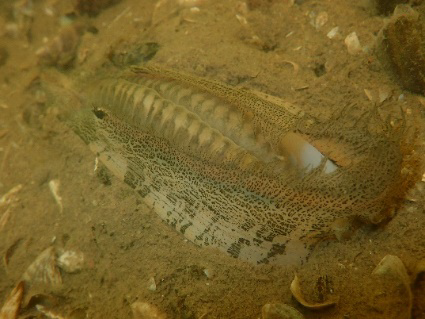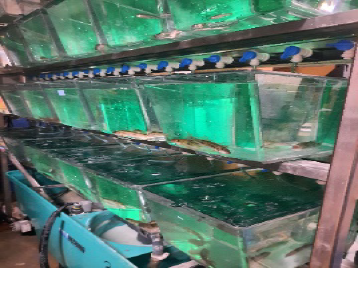
Teachers and students from Black River Falls listen to Fish Biologist, Nick Bloomfield explain about pond harvest.
October is one of the busiest months of the year at the Genoa National Fish Hatchery. October means pond harvesting time. This is the time to see what a summer worth of feeding and careful water monitoring has produced. It also offers excellent opportunities for outdoor education. Just ask Steve Teeples and his students from Black River Falls. Mr. Teeples class helped kickoff this year’s pond harvesting season starting with our smallmouth bass pond. The students eagerly put on waders and jumped into the pond toassist by scooping up hundreds of smallmouth bass and transferred them to the USFWS hatchery truck. It was great to see the excitement on their faces as they assisted with the task and learned about the life cycle of the smallmouth bass. They also learned how smallmouth bass are a host fish used in the reproduction of freshwater mussels.

Students scooping up fish in net.
In total, 9,169 smallmouth bass were harvested from the pond. Some of the bass will be distributed to federal, tribal, and state agencies to be stocked in water bodies, used in the production of freshwater mussels or kept for future broodstock.
I may be a little biased, but I honestly believe that these hands-on outdoor opportunities are vital for students’ education. It allows students to use all of their senses to interact with the natural world while assisting the hatchery with a necessary task. It also exposes them directly to natural resource based career opportunities. If you have any interest in volunteering or bringing a class to the Genoa National Fish Hatchery, please feel free to contact me. By: Erica Rasmussen














